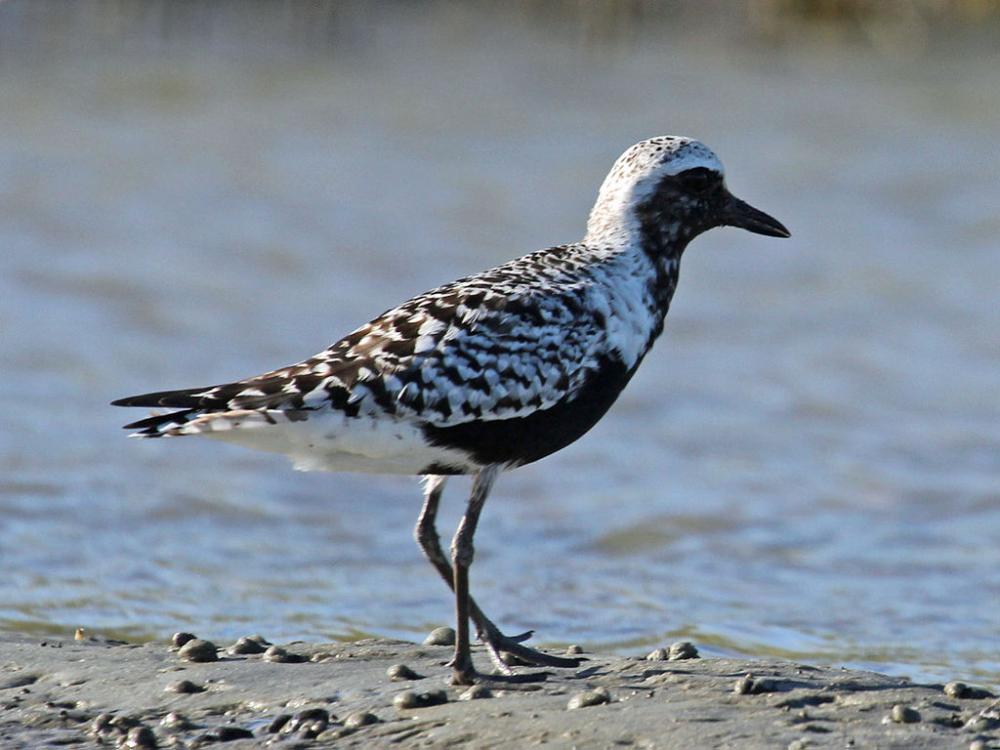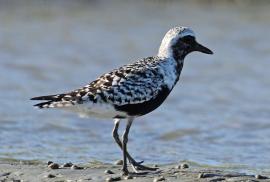Guide to Boreal Birds
Overview
Most of us see the Black-bellied Plover during the winter or in migration, when it may lack its bold black underparts but is nonetheless conspicuous among its usual companions, the smaller plovers, turnstones, and sandpipers. It is one of the shyer species, usually the first to take flight when a flock of shorebirds is approached. When disturbed, it commonly flies out over water, circles, and lands again behind the observer. It is one of the familiar winter shorebirds along the Atlantic Coast, and a few-mostly fledged the previous summer-spend the summer south of the breeding range. Its principal foods are small crabs and sandworms. Its plaintive call is a characteristic winter sound on mudflats and beaches.
Description
10-13" (25-33 cm). A quail-sized plover. Breeding adults gray, with flecks of light and dark above, black on face and breast, and white on belly. Winter adults similar, but face and breast are white like belly. Young birds have upperparts flecked with yellow, breast and belly finely streaked. In all plumages, bold white wing stripe, white rump, and black patch under wing. See American Golden-Plover.
Voice
A clear whistled pee-a-wee.
Nesting
3 or 4 buff eggs, spotted with brown, in a shallow depression lined with moss, lichens, and grass.
Habitat
Breeds on tundra; winters on beaches, mudflats, and coastal marshes, less commonly on inland marshes, lakeshores, and plowed fields.
Range/Migration
Breeds in northwestern Alaska and Arctic Canada. Winters mainly along coasts from British Columbia and Massachusetts southward. Also in Eurasia.



